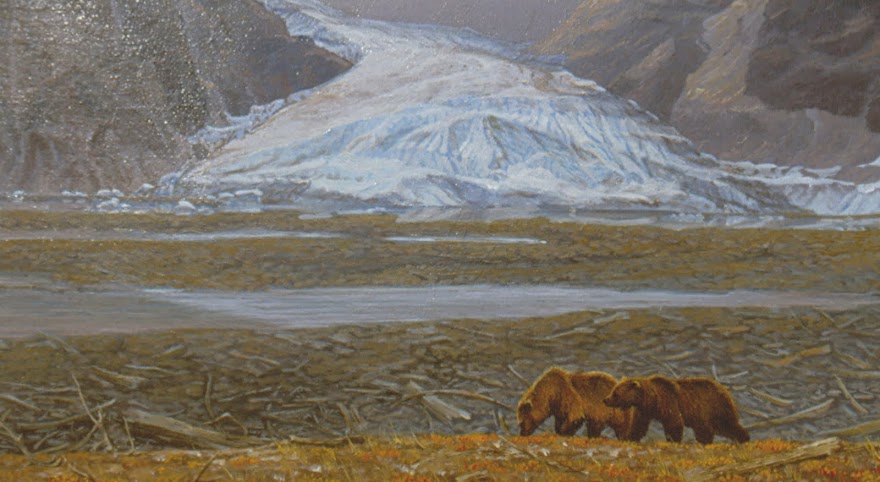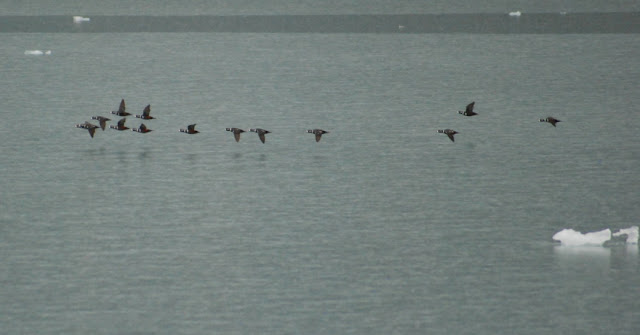Do you remember the Exxon Valdez and the big Oil Spill from a little more than a decade ago? Prince William Sound was ground zero. The local villages and small towns were devastated by the disaster. The fishing industry was wiped out and has never really recovered to this day. Marine life was especially hard hit. Although the sound seems to be teeming with wildlife these days, most wildlife populations are a fraction of what they were.
All of the photos on this post were taken by my friend Dan Holayter. He is the one I have mentioned in past blog posts. He built a cabin, (nice house) on his property out at Goose Creek and I have done a number of posts about that remote area.
He recently gave me a memory card full of his photos for use in future blog posts. Not only Alaska photos, but great places like Yellowstone, The Grand Canyon, North Carolina, and further afield in Europe and Costa Rica.
Maggie recently returned from Tibet, She, Gary and Tom are soon to head to South Africa, I will not lack for blog material for quite some time to come. The photo above is a fisherman in Prince william Sound who beached his boat, intentionally or not. Reminds me of a driver with a flat tire. Whatever the situation is, he is not having a good day.
These are Harlequin Ducks flying past some glacier debris.
PWS is loaded with glaciers. All of them are receding rapidly.
The sound is a brooding kind of place with apallingly bad weather most of the time. It rains, rains, rains.
Harbor Seals and Sea Otters like these, seek refuge from Orcas among the ice debris all around the glaciers. There seems to be plenty to eat on the shallow sea floor near the glaciers. Stick your hand in this water and it will go numb from the cold almost instantly. How do these creatures endure it?
Prince William Sound is accessible by road from Anchorage via a long tunnel through the mountains to the tiny town of Whittier. Just outside of Whittier there large colonies of Black-legged Kittiwakes, (gulls) that nest on the cliffs. The kittiwakes center their colonies around a series of spectacular waterfalls that soar into the clouds high above the bird nests.
All of the photos on this post were taken by my friend Dan Holayter. He is the one I have mentioned in past blog posts. He built a cabin, (nice house) on his property out at Goose Creek and I have done a number of posts about that remote area.
He recently gave me a memory card full of his photos for use in future blog posts. Not only Alaska photos, but great places like Yellowstone, The Grand Canyon, North Carolina, and further afield in Europe and Costa Rica.
Maggie recently returned from Tibet, She, Gary and Tom are soon to head to South Africa, I will not lack for blog material for quite some time to come. The photo above is a fisherman in Prince william Sound who beached his boat, intentionally or not. Reminds me of a driver with a flat tire. Whatever the situation is, he is not having a good day.
These are Harlequin Ducks flying past some glacier debris.
PWS is loaded with glaciers. All of them are receding rapidly.
The sound is a brooding kind of place with apallingly bad weather most of the time. It rains, rains, rains.
You better believe that this place is cold. You can feel the constant press of frigid air emanating off the many glaciers.
What awsome shapes and colors come from all this ancient ice.
The glaciers slough off big chunks of ice almost constantly. It creaks and groans, then cracks like thunder. The calving ice can be very frightening if you are too close for comfort. It will literally rock your boat...hard!Harbor Seals and Sea Otters like these, seek refuge from Orcas among the ice debris all around the glaciers. There seems to be plenty to eat on the shallow sea floor near the glaciers. Stick your hand in this water and it will go numb from the cold almost instantly. How do these creatures endure it?
Prince William Sound is accessible by road from Anchorage via a long tunnel through the mountains to the tiny town of Whittier. Just outside of Whittier there large colonies of Black-legged Kittiwakes, (gulls) that nest on the cliffs. The kittiwakes center their colonies around a series of spectacular waterfalls that soar into the clouds high above the bird nests.
















































